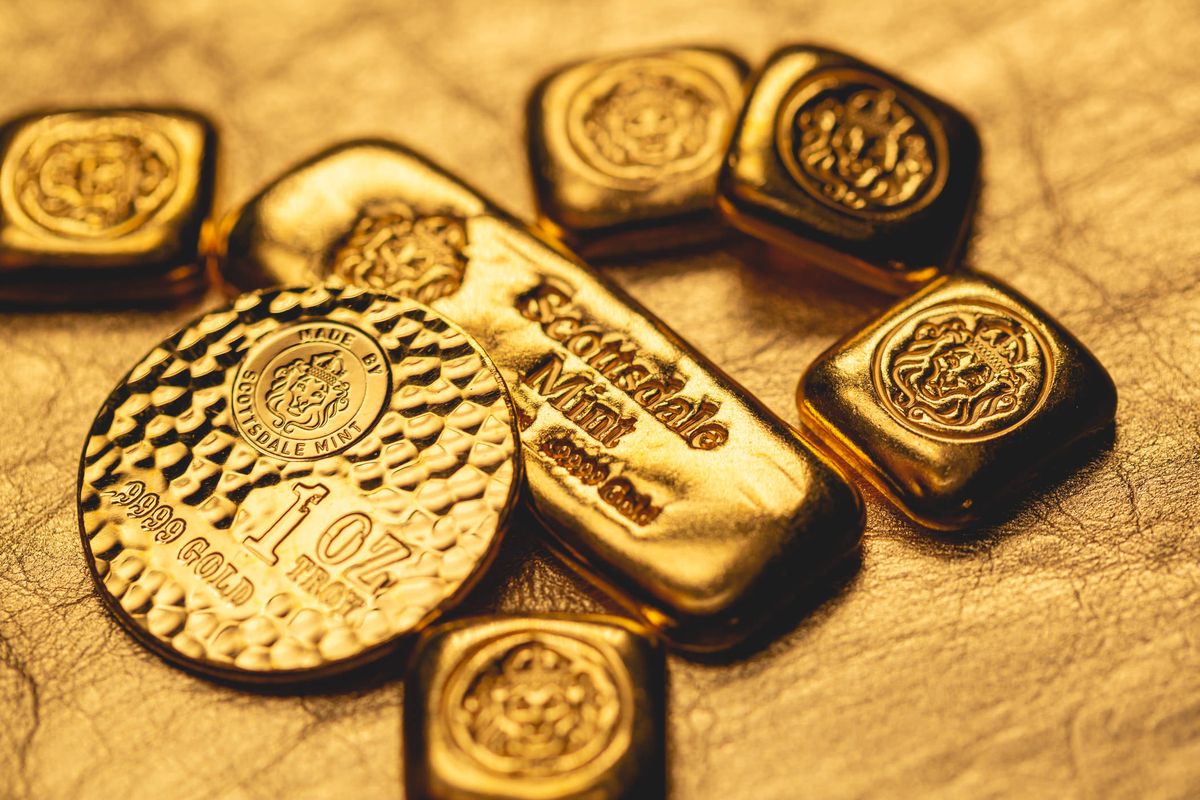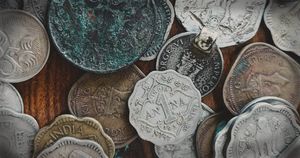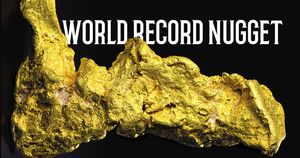Gold is the iconic precious metal, its brilliant yellow shine a universal message of wealth, power, and luxury. Across human civilizations, gold has always been cherished for its unique properties: its malleability and ductility, its inability to tarnish or rust, its reflectiveness, and conduction of heat and electricity. Gold has inherent value — which is why investors continue to purchase gold from Scottsdale Mint.
The human fascination with gold is nothing new, and the value ascribed to gold is what makes the metal such a desirable investment for adding stability to portfolios. As investors consider purchasing bars, coins, and rounds from Scottsdale Mint, they might take the time to learn about the long and storied history of gold.
Golden Beginnings
Deep in the heart of a massive, dying star, atoms smashing together under extreme pressure eventually form the gleaming, yellow metal we lovingly call gold. Gold created in millions of supernovae traveled across the universe and joined the other matter in the formation of the Earth.
Later, early humans found glimmering pieces of gold in streams. There is no record of the first discovery of gold because it likely occurred more than 42,000 years ago. The earliest evidence we have for humans collecting gold comes from a Paleolithic cave in Spain. Gold usually occurs in a pure form, as in gold nuggets, and the ease of transforming gold meant that early human societies could use rudimentary tools to form gold into valuable ornaments, like jewelry and statues. The oldest gold artifacts date back to around 4600 BCE in Bulgaria, where a necropolis contains a huge number of diverse golden objects, such as bracelets, amulets, beads, scepters, and more.
Still, gold has always been rare, so not everyone through the history of gold has enjoyed access to this dazzling and valuable material. From ancient civilizations to the present, the wealthy and powerful tend to control the vast majority of the gold. Royal families, in particular, were lavished with all sorts of golden items, and gold was often used as a tribute to deities. Both palaces and places of spiritual importance, like temples, churches, and religious monuments, would become heavily ornamented with gold decorations, demonstrating the metal’s worldwide cultural importance.
Because gold was valuable around the world, many civilizations used gold as a currency. The first to do so was the Kingdom of Lydia, in modern-day Turkey, in 700 BCE, but larger and richer empires like the Egyptians and the Babylonians were quick to follow. The Greeks and Romans used their gold wealth to expand into new territories, where they enthusiastically mined more gold to fund their military operations.
Gold’s Middle Ages
Eventually, the history of gold as currency took a turn. The rarity of gold made the metal a disadvantageous material for currency in a huge and dispersed empire, so many countries moved away from gold coinage in the Middle Ages. Instead, a central authority printed and minted other forms of money, like other metal coins and paper bills, and promised to exchange legitimate currency for its value in precious metal. Called the Gold Standard, this system fostered greater public trust in certain currencies, allowing economies to grow.
From the ancient era through the Middle Ages, humankind developed new techniques for extracting, refining, and fabricating with gold to create new, more intricate, and more fantastic gold objects. As alchemists experimented with creating gold from lead, others searched for new and better natural sources of gold. The first discovery of gold in the Americas fueled a frenzied exploration of the new continents, which uncovered vast troves of gold artifacts created by Native American civilizations, like the Inca and Aztec. However, the indigenous people of North America found gold useless and placed a much higher value on useful minerals like obsidian and slate, making them relatively unique in a world of gold-hungry peoples.
Even after the colonization of the New World, a hunger for gold drove people to explore. The Spanish believed in the myth of El Dorado, which variably involved a tribal leader covered in gold dust, a city made from gold, or a native empire. Chasing El Dorado led many European settlers to move westward across the Americas during the 19th century, and the first discovery of gold in western U.S. territories spurred the Gold Rush, which brought thousands of prospectors into the Dakotas, Colorado, California, and eventually Canada and Alaska.
Gold Today
Over the course of the history of gold, humankind has extracted about 80 percent of the Earth’s gold according to current estimates. The gold standard became obsolete in the middle of the 20th century, but the value of gold remains as high as ever. Industrialization and technological innovation through the 20th and 21st centuries have identified some new and interesting uses of gold. Gold has applications in dentistry and medicine as crowns and disease cures as well as in electronics and aerospace as a conductor or lubricant. Still, almost all the demand for gold today comes from the jewelry industry and precious metal investment.
In fact, the turbulent economic activity of the 21st century has demonstrated the importance of savvy gold investment. What is the highest price of gold in history? At the beginning of the COVID pandemic, gold reached its all-time high — and a similar, unexpected economic and political event could send gold prices soaring once again. Scottsdale Mint wants to help investors take advantage of the valuable history of gold, now and into the future. To shop their inventory, including gold coins, go to their website.





